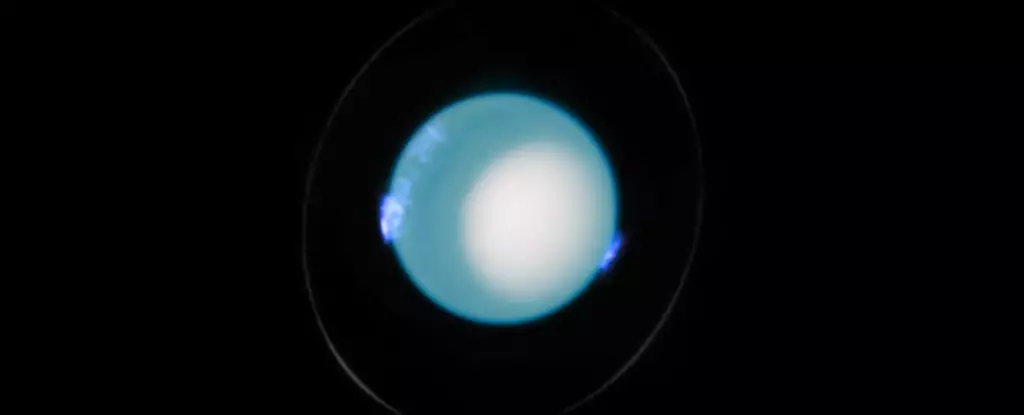Recent discoveries have cast long-standing assumptions about the rotation of Uranus into doubt, highlighting the necessity of continual scientific inquiry. The precise duration of a day on this distant planet has been recalibrated to 17 hours, 14 minutes, and 52 seconds—a figure that is 28 seconds longer than previously estimated based on data collected during Voyager 2’s historic flyby in 1986. While this minute increment may initially appear inconsequential, it is, in reality, a significant advancement in planetary science. Such revelations have profound implications not only for our understanding of Uranus but also for the methodology used in measuring celestial phenomena.
The Importance of Accurate Measurements
Astrophysicist Laurent Lamy of the Paris Observatory underscores the importance of this updated figure, asserting that it offers a critical reference point for scientists navigating the complexities of outer solar system studies. The inaccurate measurement of Uranus’s rotation rate led to a considerable muddling of our understanding of the planet’s magnetic orientation, exacerbated by outdated coordinate systems that failed to track Uranus’s magnetic poles effectively after Voyager 2’s flyby. This inconsistency in our knowledge has hampered not only scientific inquiry but also potential exploratory missions aimed at Uranus.
The miscalculation exemplifies how minor discrepancies can escalate into major confusion within the context of planetary sciences. Accurate measurements foster a clearer understanding of the interactions between planets within our solar system. In this vein, the revised measurement may enable scientists to advance their research and exploration endeavors concerning Uranus while simultaneously reopening discussions about methods used in studying other distant worlds.
A New Era of Observation
The recent study leveraged data from the Hubble Space Telescope, spanning a decade-long observation period from 2011 to 2022. By scrutinizing the planet’s ultraviolet auroras—phenomena emanating from the interaction of solar particles with Uranus’s magnetosphere—the research team was able to intricately track and measure the magnetic poles of the planet. The uniqueness of Uranus’s orientation, where its rotational axis remains nearly parallel to the ecliptic plane, presents particular challenges in identifying its magnetic poles. Nevertheless, Lamy’s team successfully navigated these hurdles, employing cutting-edge observational techniques to yield the most accurate measurements of a giant planet’s rotation rates to date.
Interestingly, the case of Uranus is not just a tale of renewed understanding; it is emblematic of the challenges inherent in studying celestial bodies that are positioned at vast distances from our own planet. For instance, much of what is known about Uranus and its neighbor Neptune, both ice giants, was gleaned from single encounters during the Voyager mission. Their fuelling distances from the Sun make them small and dim from our vantage point, complicating direct observations and prompting a need for innovative strategies.
Implications for Future Exploration
The enhanced understanding of Uranus’s rotational timing opens a plethora of new pathways for scientific discourse and space exploration. It is an invitation for scientists to revisit their assumptions, and with the advent of upcoming missions to the outer solar system, this renewed methodology will undoubtedly enrich our comprehension of Uranus and ultimately reshape our economical approach to studying other giant planets. The extraction of reliable auroral data may now provide insight into atmospheric dynamics, magnetospheric interactions, and other vital features of Uranus and other giants in our solar neighborhood.
With the precision of this new measurement, the critical groundwork has been laid for longitudinal studies that could span decades, incorporating data from various missions and contributing to a more nuanced understanding of the ice giants. As scientists shift their focus back to Uranus, the ongoing dialogue surrounding its mysteries—and the broader implications for planetary science—remains as engaging as ever. This marks a pivotal moment in our solar system exploration journey, reinforcing the idea that in science, no discovery is too small to inspire a revision of what we think we know about our cosmic neighbors.


Leave a Reply